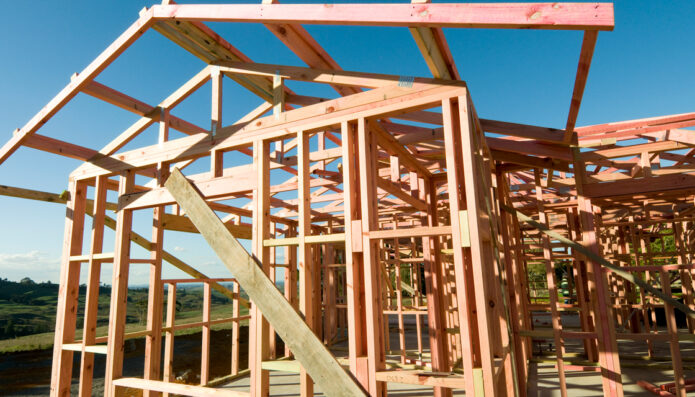PHOTO: It’s the smaller state capitals that are dominating the list of 2023 property investor hotspots.
REPUBLISHED WITH PERMISSION | API MAGAZINE
Sydney and Melbourne are among the least attractive property investment markets in Australia for 2023, according to a major new report, but one of the smaller capitals is at the top of the hotspot list.
When it comes to the hottest property prospects for 2023, Adelaide is cooking on the barbecue while Sydney and Melbourne are buried deep in the bottom of the esky.
The double-digit property price falls of the past year in the country’s biggest cities have not been enough to lift their ratings in terms of investment prospects for 2023.
Canstar, which collaborated with Hotspotting’s Terry Ryder, used a series of forward-looking indicators to provide an insight into what the year ahead may look like for Australia’s 14 key property markets – the eight capital cities as well as six regional state or territory areas.
Rising Stars Rankings
| 2023 | 2022 | Region | |
|---|---|---|---|
| 1 | ↑ | 9 | Adelaide |
| 2 | ↑ | 8 | Brisbane |
| 3 | ↑ | 7 | Perth |
| 4 | ↓ | 2 | Regional Queensland |
| 5 | ↑ | 3 | Regional Western Australia |
| 6 | – | 6 | Darwin |
| 7 | ↓ | 1 | Regional New South Wales |
| 8 | ↑ | 14 | Regional South Australia |
| 9 | ↓ | 5 | Canberra |
| 10 | – | 10 | Regional Victoria |
| 11 | ↑ | 13 | Hobart |
| 12 | ↓ | 4 | Sydney |
| 13 | ↓ | 11 | Melbourne |
| 14 | ↓ | 12 | Regional Tasmania |
Source: Canstar.com.au/rising-stars-report
Previously seen as a stable market that failed deliver real estate capital growth because of its unchanging population and economy, Adelaide has been transformed through national leadership in the alternative energy space and is becoming a city of growing importance in the education and defence industries.
Among the five measured metrics, the South Australian capital was ranked no worse than fifth in any of them.
As well as largely resisting the national property market downturn, rental yields are paying dividends to investors. Adelaide has the lowest vacancy rate among the state and territory capital cities, recording 0.4 per cent, according to SQM Research. Three quarters of suburbs recorded increases above 10 per cent in their house rents in the past 12 months.
Terry Ryder, Managing Director, Ryder Research Resources, said that at a time of widely tipped property price crashes, there was actually little evidence of an imminent dramatic decline.
“There’s more in play than interest rates, which points to upward pressure on prices,” he said.
“Infrastructure spending is considerable, vacancies are historically low and rents are rising.
“We have an undersupply of homes, which will worsen because of shortages and delays in the building industry, at a time when borders have reopened and migrant intake is being lifted.”
Mr Ryder said the most notable trend was a shift towards affordability, as the expense of the highest prices capitals such as Sydney, Melbourne, and a Canberra, all of which plunged in the ratings.
“Our two biggest cities rank low, while unfancied markets such as Darwin, Regional Western Australia and Regional South Australia rank higher.
“Smaller capital cities including Adelaide, Brisbane and Perth and regional markets like Queensland top the rankings,” he pointed out.
Sydney property on the slide
Rising stars: Canstar’s Australian Property Market Report 2023 used Sydney as an example of interest rates not being the sole determinant of property prices.
“One of the enduring fallacies in mainstream media is that interest rate rises caused the Sydney boom to subside,” the report noted.
“The reality is that the Sydney market was falling long before the Reserve Bank made its move in May 2022.
“Analysis of sales activity shows that Sydney overall peaked in mid-2021, was fading in the second half of that year and dropped markedly in the March quarter of 2022, well ahead of the first interest rate increases.”

Aside from strong rental growth, there was little to encourage investors to jump into the market in 2023, according to the report.
Less than one-third of suburbs have upward sales momentum, which peaked a year ago, and this has contributed greatly to Sydney’s poor ranking overall.
While the Sydney market overall has dropped, middle-ring municipalities that offer houses in the $900,000 to $1.5 million range – including Canterbury-Bankstown, Georges River, Cumberland, Parramatta and Fairfield – still have growth markets.
Apartments are attracting increasing buyer demand, especially in well-connected suburbs where median unit prices are half that of median house prices or less. The Sydney City, Inner West and Parramatta LGAs are all attracting growing interest for apartments that offer relative affordability.
Melbourne market weakens further
While sales volumes have held up reasonably well in Melbourne, it has still slipped below even Sydney, and only above Regional Tasmania, in terms of investment prospects for 2023.
As with the rest of the country, it is the top end of the market that has borne the brunt of median dwelling price falls.
CommSec’s State of the States report ranked the Victorian economy the strongest in the country but that has not translated into market activity, which is subdued.
Only 13 per cent of suburbs have delivered growth in the most recent quarter, which means Melbourne ranked last among the nation’s 14 market jurisdictions.
In keeping with the national quest for affordable housing, the biggest uplift in Melbourne demand is in inner-city suburbs with a high content of apartments.
A strong economy, however, is buoying investors’ prospects in Perth.
Billions of dollars being poured into infrastructure projects is combining with affordability, low vacancy rates and significant rental growth to lure investors even if price growth remains its soft selling point.
The report identified all of Perth’s top ten selections for 2023 investment as having median house prices well below $500,000, as well as identifiable growth drivers.
Regional Western Australia also ranked highly in this national analysis, boosted by very low vacancies, strong rental growth and an uplift in buyer activity.
In last place on the list is Regional Tasmania, which after a prolonged boom, has passed its peak.
Borrowing constraints an issue
Canstar’s Editor-at-Large, Effie Zahos said the number one rule when it comes to buying property hasn’t changed.
“You’ve got to get your location right.
“Australia’s property market is unlikely to see the rapid growth in prices that we have seen over the past couple of years.
“Bargains may be just around the corner, with some forecasts predicting price drops of up to 20 percent, but not all bargains will get you the same gains.”
Buying in a market of rising interest rates also requires buyers to factor in affordability, Ms Zahos added.
“Shopping for the perfect house in the perfect street won’t matter if you can’t afford the loan.
“Buyers must carefully consider their future plans and if they can still reasonably make repayments.
“Rising interest rates and living costs will be impacting affordability and the borrowing power of buyers.
“This could see more buyers locked out, so with less competition in the market prices in some areas could fall further.”
MOST POPULAR IN NEW ZEALAND
- Real estate agent attacked in prison
- Ex-real estate agent in court for allegedly breaking into houses
- Family paid $500k for modular home they may never receive
- Claims about Jacinda Ardern’s wealth
- The real estate market takes another victim – The Block NZ
- Ross Taylor achieved real estate dream
- Abandoned land for sale
- Real estate agency targets mortgagee and estate sales
- House prices continue to fall, new listings down | WATCH
- Wellington remains at ‘epicentre’ of property downturn
















